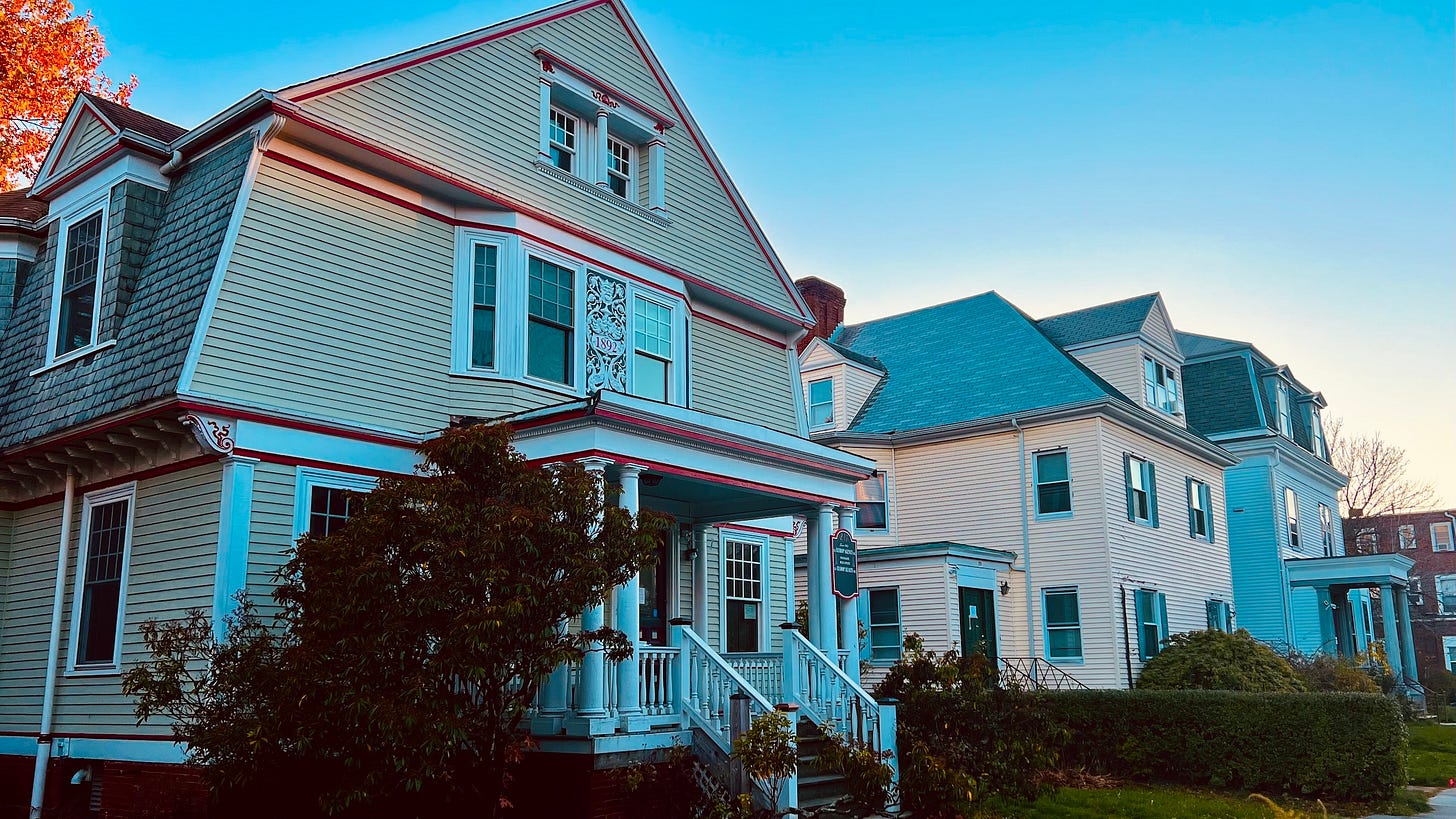Three historic houses on the East Side to be destroyed by developer
The community objects, but under current law are powerless to prevent the destruction...
“We're gathered here today because these three beautiful homes behind me are set to be potentially demolished,” said Providence City Councilmember John Goncalves to the more than thirty College Hill residents who gathered across the street from 209, 211, and 217 Angell Street. The three buildings are set to be demolished, by owners unknown, and converted to a vacant lot. “While we were able to demand accountability and transparency and certainly buy time with our stop work order, given the lack of notice required by city ordinance, the owner and applicant were able to reapply for a demolition permit.
“So what does that mean? By legal right, the owners can move forward with the demolition. However, with no development plans in place, the demolition and subsequent empty lot here will leave a massive hole and scar in this neighborhood.
“And although we have no legal recourse, we do urge the owners [to do] the following:
“First, we believe the owner should reconsider and in solidarity, we oppose and say no to demolition. Demolition of these properties in these housing units with no plans is a travesty to the community, especially in light of the housing crisis that we face.
“Second, although not required by ordinance, should they heed or not heed the call to not demolish, we believe neighbors and stakeholders need to be kept informed and kept abreast of any forthcoming plans, and that transparency and communication are vital for the future. We believe that safety should also be of utmost priority - whether it's the noise, the dust, the debris -[safety should] be taken very seriously so as not to adversely impact students, families, employees, and the travelers who are traversing this area.
“Ultimately, we're here in solidarity with these three homes... We're taking a stand in protecting the historic vibrancy of this community. Now, should these homes be demolished, which we again implore the owners to reconsider, I'd like to call for a preemptive moment of silence in honor of these historic homes and their contributions to the neighborhood.”
“I've been at Providence Preservation Society for a month so far as executive director,” said Marissa Angell Brown. “Today we want to think about, reflect upon, and acknowledge these buildings... There's a lot of work to start tomorrow in terms of thinking about how to make this kind of thing less possible in the future.
“I want to share a little bit of what we know about these buildings and who lived in them as we contemplate their passing, which may come as early as tomorrow. This is a tribute, in some ways, while we still have the buildings. We all know they may be demolished as early as tomorrow morning.
“As John said, these three homes were built between the 1850s and 1890s. 209 was first, built in the 1850s on the corner, and the next two were built in the 1890s. This was the last era of residential building in this neighborhood right before Brown University and commercial buildings took over the neighborhood. All these buildings were noted in the National Register description of the College Hill Historic District. We don't know who the original owners or architects were, but we do know that by the 1930s and 40s it [housed] a series of doctors' offices as [did] the other two.
“One of these people was Seebert J. Goldowski. Goldowski was a Providence surgeon who taught at Brown and wrote several books including a significant history of Jewish life in Providence. It was a history of Temple Beth-El. It was a history that was considered one of the early important books about Jewish culture in America. Goldowski had his office in 209 for a while.
“211 in the center is the building we know the least about.
“217 is the one that we know most about. It was the original home of John Howard Appleton, who like Goldowski was a professor of chemistry at Brown who wrote 12 books on chemistry through the 1930s to 1950s. It was the home of George Metcalf, who was a 1913 Brown grad and later trustee of Brown who ran a local ad and PR firm.
“I wish we knew about the women who probably took care of these homes more than those men did. I wish we knew about the laborers who built the homes. I wish we knew more about the people who maintained them over the 130 years, but we don't. These are sort of some of the remnants of what we know. I think what's important to keep in mind is we know they were built as residences, but they were later used as offices through the 1930s and 50s. These homes went through a period of adaptive reuse. They found a way, and Providence people found a way, as much as the neighborhood was changing, to make them work for the city.
“I hope that maybe, if there's a chance to not demolish them, to think creatively about how these places might be revisioned for the future. Providence Preservation Society would love to be a part of and support that conversation as we think about the value of these places for us and our city.”
As of this writing, the future of these buildings is unknown. As Providence and Rhode Island face a crisis in affordable housing, here are three houses that could be homes to around 15 families being destroyed.
Thank you for reading.
This work only happens because of the generous support of people like you.
Please consider making a small donation.
Share Share Share!





I would hope people might consider ways to make demolition highly problematic for the stealth owners.
Unbelievable. Thanks for the article